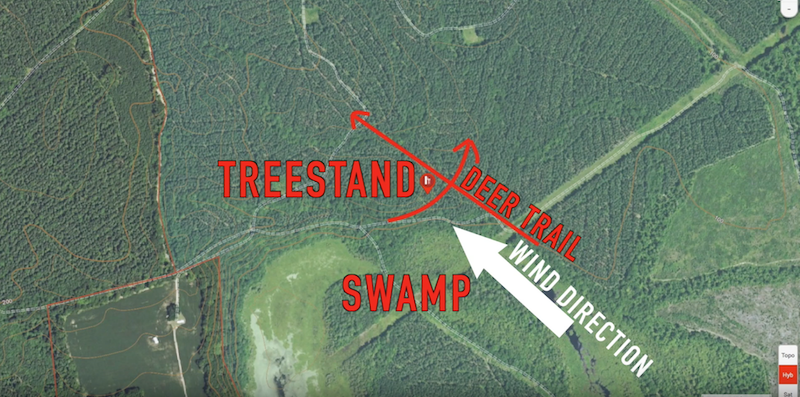You’ve sat in your treestand every evening for a week. The slightest sound makes your heart skip a beat, but the only four-legged mammals you’re seeing are squirrels.
Meanwhile, your buddies are texting pictures of bucks they’re passing up. Bowhunting season is getting shorter daily, and you’re wondering what you’re doing wrong. If you fix or avoid some common mistakes, those deer might magically appear.

Know the difference between old sign and sign from this season. Photo Credit: John Hafner
Not seeing deer doesn’t mean they’re not around, but let’s double-check. How did you select your hunting site? Was it based on fresh deer sign like scat, rubs, beds, scrapes and tracks? You must know the difference between old and new sign. Deer pellets, or droppings, usually look wet and shiny for about 12 hours. Fresh scrapes often have recently pawed or urine-soaked dirt. A recent rub has bark shavings at the tree’s base, and sometimes pawed or trampled ground with tracks. If all such sign looks old, the deer likely moved, and so should you.
For more information on reading deer sign, check out, “Fresh Deer Sign Pinpoints Where to Bowhunt.”
Deer movements shift with the seasons. As their food and shelter needs change, deer move to more suitable habitat. During summer, deer eat green vegetation like ragweed, goldenrod and woolly croton. When fall arrives, they target soft mast like grapes, apples, blueberries and other fruits; and hard mast like acorns, walnuts and pecans.
If you hung your treestand based on where you saw deer in summer, resume scouting. You need to find ample deer food for the current season. To learn more about seasonal deer foods and movements read, “Where’d They Go? How Food Affects Deer Movements” and “Understanding a Whitetail’s Diet.”

Deer are ultra-sensitive to smells, so make sure the wind isn’t too strong before you venture out. Photo Credit: ATA
White-tailed deer rely on superpowers in their nose. Even treestands aren’t foolproof in the wind. Deer might be smelling you long before you can see them. Pay attention to the wind, which means remaining downwind of deer whenever possible. If you plan to hunt feeding grounds, make sure the wind isn’t blowing toward approaching deer.
Check daily weather forecasts, use wind indicators to monitor its direction, and talk to experts at a nearby archery storefor their insights on prevailing winds. Consider hanging multiple treestands to handle the most common wind directions. Before each hunt, check the wind direction one more time before choosing which stand to hunt, and keep the wind in your face while walking to it.
Try to minimize your scent as much as possible. Archery shops offer various scent-management products like sprays, detergents, deodorants and shampoo. Wash your hunting clothes in scent-free detergents, dry them with naturally scented drier sheets, and seal them in an airtight bag until it’s go time. Don’t wear potent-smelling lotions, and avoid smelly snacks while afield.
Plan how you’ll enter your hunting site. If possible, clear a subtle path to each treestand so you can enter and exit quietly. Avoid touching branches and other vegetation, which leaves scent in your wake. Consider wearing rubber boots to minimize your scent trail.
Deer move most in low-light conditions, so be sure you’re sitting at dawn and dusk to boost your chances. If you’re not seeing deer, you might be reaching your treestand too late and leaving too early. Get settled at least a half-hour before you expect deer to move. That means arriving before first light in the morning, and at least an hour before dark in the late afternoon. For evening sits, plan to walk out in darkness. If you leave too early, you risk scaring deer from the area.
If you’re not seeing deer, don’t lose hope. Success can come when you least expect it. By changing and adapting to conditions, you’ll regain the edge. Whenever you need a confidence boost, visit your local archery shop and talk to an expert. They’ll be happy to discuss your strategies and suggest tactics to flip your odds for success.